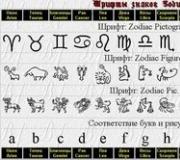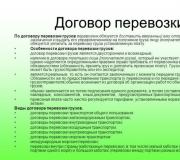Beyond the “vulnerable five”: how rising rates in the US affect the ruble exchange rate. Analysts predicted an unexpected reaction of the ruble to the increase in the Fed base rate. How does the lowered Fed rate affect assets?
A fairly clear picture of how the Fed sees the near future of monetary policy is given by the so-called dot plot - the forecast of each participant at FOMC meetings, what the rate should be at the end of the year. 12 out of 16 participants in the last FOMC meeting predicted another increase at the end of 2018; Thus, it is very likely that the Fed will raise rates again in December. In 2019, the regulator is inclined to three or more increases in the key rate, in 2020 - to one. That is, in two years the level of the base rate may reach the range of 3.25-3.5%.
The need for the “stimulative” characterization for US monetary policy arose after the 2008 crisis, when the Fed needed to “anchor” investor expectations in order to stimulate economic growth, recalls Igor Klyushnev, head of the trading operations department at Freedom Finance Investment Company. To do this, it was necessary to reassure economic agents that low rates would remain low for a long time in order to stimulate lending and investment activity. For the same purpose, the Fed began publishing dot plots. According to the analyst, the situation is now changing and the future trajectory will become less predictable and more dynamic, as uncertainty around the role of the neutral rate for the economy increases. FOMC members will be less likely to show unanimity, and a revision of the mechanism for forecasts made by participants in committee meetings is also possible, Klyushnev suggests.
How did Trump react to the Fed's decision?
US President Donald Trump, when it became known about another rate increase, once again expressed dissatisfaction with the Fed's monetary policy. “Unfortunately, they have raised the stakes. I'm not happy with this. I am concerned that they seem to like to raise rates,” the American leader said at a press conference in New York.
Donald Trump (Photo: Justin Lane / EPA / TASS)
Trump's reaction to the regulator's actions is extremely atypical for the United States. Since Bill Clinton, the White House has avoided commenting on monetary policy to ensure the Fed's independence in decision-making. However, Trump in an interview with CNBC in July and then in a closed meeting with Republican donors in August criticized the Fed for raising rates, which, in his opinion, runs counter to the president’s policy of stimulating economic activity. He admitted that when nominating Jerome Powell for the post of Fed Chairman, he hoped that he would adhere to the policy of affordable money.
However, as practice shows, criticism of the American president does not affect the Fed, and this time Trump’s words did not cause any additional reaction in the markets.
How the market reacted
Tightening monetary policy in the United States is traditionally one of the factors of pressure on the currencies of developing countries, including the ruble. They react especially sharply to changes in a state with a serious imbalance in the current account and public debt. However, this time the Fed’s decision was expected: based on futures quotes for the federal funds rate, the probability of a rate hike on the eve of the FOMC meeting was estimated at 95%. The FOMC communiqué and Powell's speech also did not bring any big surprises. Therefore, the market reaction turned out to be neutral: such a development of events was already included in prices and rates.
The euro only briefly strengthened against the dollar (increasing from $1.175 to $1.179 per euro). The ruble also did not react to the Fed’s decision: the exchange rate of the Russian currency against the dollar at the close of trading was at the same level as at the close the day before (65.8 rubles). The ruble was trading in the same area on the morning of September 27.
For a long time, the factor of divergent policies of regulators in Russia and the USA (increasing rates by the Federal Reserve and lowering them by the Central Bank) put pressure on the ruble. For investors adhering to the carry trade strategy (borrowing government currency with a low interest rate, converting it and investing in government instruments with a high interest rate), the convergence of interest rates made the ruble less attractive. B and the Fed made the same decision - to raise the rate by 0.25 percentage points. However, the carry trade support factor for the ruble is no longer as strong as it was several years and even months ago, says Vladimir Osakovsky, chief economist for Russia and the CIS at Bank of America Merrill Lynch. Now the Russian currency is supported by other factors, such as the current account, which has grown significantly. The positive current account balance, according to the Central Bank, reached $69.0 billion in January-August compared to $19.1 billion in January-August last year against the backdrop of rising oil prices and a moderate increase in imports.
Following the meeting of the Open Market Committee, the Federal Reserve expectedly increased the base interest rate in the United States by 25 bp, to 1.75-2%. The American regulator explained the decision by the fact that the country's economy and economic activity are demonstrating steady growth rates, and the labor market continues to strengthen. “Family expenses increased, while investment in fixed assets continued to grow,” the communiqué from the Committee meeting noted.
Still, Fed Chairman Jerome Powell noted that “concerns about changes in trade policy are growing. We're starting to hear about this from companies delaying investment and hiring."
The Fed also emphasized that the country's monetary policy remains accommodative. The Committee is targeting inflation at 2% and, judging by the statement of Federal Reserve Chairman Jerome Powell, is not afraid of its reduction. The Fed is expected to raise rates two more times by the end of this year. Next year, the Fed is scheduled to raise rates three times.
An increase in the Fed key rate means an increase in prices for goods and services in the medium term, says Georgy Vashchenko, head of the operations department on the Russian stock market at Freedom Finance Investment Company. Loans in the economy will become more expensive. But the effect on the American economy and other countries will be different. Rates are low in the US right now, and international banks are funded in the US whenever possible. Commodity producers in Russia, Saudi Arabia and other countries prefer to borrow in dollars because their revenue is in dollars.
The cost of their production will increase due to rising costs of equipment and servicing loans, and profitability may decrease due to competition with American manufacturers. Oil production in the United States is growing, it has already reached almost 15 million barrels. per day, an increase of 12% compared to last year.
How can one not understand?
For Russia, as for other countries, raising rates in the United States has more negative consequences than advantages, says Georgy Vashchenko. Russia has a lower investment rating, higher inflation and more risks, which is associated with the volatility of prices for raw materials, dependence on foreign markets and raising capital. Accordingly, investors want to receive O higher profitability compared to dollar instruments.
The Central Bank is forced to maintain the rate at a high level in order to ease pressure on the ruble. And a rate above 6% hinders economic growth. Despite the rise in oil prices to almost $80 per barrel and the relative stability of the ruble, as well as low inflation, GDP growth this year will probably be less than 2%, Georgy Vashchenko expects. Russia is among the laggards among the group of BRICS countries. The Central Bank will most likely leave the key rate unchanged on Friday.
In general, the Fed’s increase in the reserve rate is a long-term process that can be observed in the last few years, recalls, in turn, the general director of the Kharitonov Capital Investment Company, Maxim Kharitonov. The American economy is actually doing well, mainly as evidenced by rising inflation and falling unemployment. This is quite logical after the extensive quantitative easing (QE) programs, which by historical standards ended quite recently, and consisted, in simple terms, of pumping money into the economy through the mechanism of money emission.
According to the analyst, this mechanism is inertial, it has accelerated quite strongly, raised the prices of many assets, and therefore now the Fed is starting to slowly, carefully stop it so as not to overheat the markets. Increasing the reserve rate is one of the methods of slowing down the economy; in simple terms, it makes borrowed money more expensive, which means it reduces the appetite of firms and investors for rapid growth and the risk that accompanies such growth.
What is important for markets is not only today’s specific rate increase, but also the fact that there may be two more such increases this year. That is, the rate could reach 2.5% already this year. And also that in 2019 the rate may be raised 3-4 more times. And we can assume that by the end of 2019 it will grow to 3.5-3.75%. At this rate level, international investors will be inclined to invest in American companies and their securities, especially given Trump's tax reform and new tariffs on raw materials that should give American producers an advantage.
This trend means, explains Maxim Kharitonov, that money that was previously invested in emerging markets will go from there to the US market, as well as the EU. For the ruble and ruble assets, unfortunately, this means the prospect of loss of interest from international investors and speculators. The smaller the spread between the Central Bank key rate (7.25%) and the Fed reserve rate (1.75-2%, and in the future - 3.5-3.75%), the less attractive carry trade operations that support the ruble are. With the Fed rate increase, according to Kharitonov, the ruble will fall lower and lower against the dollar. By the end of 2018, you can expect 68-69 rubles per dollar, and in 2019, it will go beyond this range, to 73-75 rubles.
This year another, fourth, increase is planned
Federal Reserve Building in Washington DC
Moscow. September 26. website - The Federal Reserve System (FRS), following a meeting on September 25-26, decided to increase the interest rate on federal funds rate by 25 basis points - to 2-2.25% per annum. This is stated in the communiqué of the Federal Open Market Committee (FOMC).
The FOMC decision coincided with the forecasts of the vast majority of economists and market participants.
Median dot plot forecasts from the September meeting indicated that 12 of the 16 FOMC members expect a total of four rate hikes this year. Forecasts for 2019 continue to call for three rate hikes.
The Federal Reserve raised rates for the third time in 2018, having previously raised rates in March and June.
The FOMC refused to designate monetary policy as “stimulating” in the communiqué following the meeting, which, according to experts, indicates that the rate level is approaching a neutral level.
"Given past and expected labor market conditions and inflation, the committee decided to increase the target range for the interest rate on federal lending funds to 2% to 2.5%," the Fed said in a statement.
The communiqué following the previous meeting noted that “the course of monetary policy remains stimulating.”
“Information received since the August FOMC meeting indicates continued strengthening of the labor market and strong growth in economic activity,” the communiqué said.
“Employment growth has been strong on average in recent months, and unemployment has remained low,” the Fed notes. “Consumer spending and business fixed investment grew at a strong pace,” the document notes.
“In annual terms, both the overall inflation rate and inflation excluding food and energy prices remain close to 2%,” the communiqué said.
“Indicators of long-term inflation expectations have changed little overall,” Fed officials say.
"The FOMC's responsibility is to promote maximum employment and price stability. The Committee expects that further gradual increases in the base rate target will be consistent with sustained growth in economic activity, a continued strong labor market, and inflation approaching the 2% target over the medium term," it notes. in the statement.
Risks to the economic outlook appear roughly balanced, FOMC members say.
“In determining the timing and size of future adjustments to the target Federal lending rate range, the committee will evaluate both actual and expected economic conditions relative to the targets of maximum employment and 2% inflation. This assessment will take into account a wide range of information. , including indicators of labor market conditions, indicators of inflation pressure and inflation expectations, as well as data on changes in financial and international conditions,” the document notes.
On Wednesday, September 26, the US Federal Reserve will make a decision on the interest rate - it will be made public at 21:00 Moscow time. This time we have every reason to believe that the market has already fully priced in two interest rate hikes before the end of the year.
Investors assume that changes in forecasts and official comments from the American regulator will be minimal. However, it is possible that fairly high rates of economic growth, positive dynamics of wages and a tendency towards accelerating inflation will become the basis for a more optimistic base forecast and expectations for rates. In this case, we can count on the US dollar strengthening against emerging market currencies.
In August, the rate of core inflation in the United States amounted to 2.2%, exceeding the target level set by the Federal Reserve for 2018 - 2%. At the same time, the unemployment rate at the end of last month was 3.9%, that is, it was even below the target (4%), and the Fed interest rate is still 100 basis points less than the neutral level.
Most members of the Federal Open Market Committee (FOMC) believe that such a divergence of monetary policy from macroeconomic indicators is illogical, so the federal funds rate should be raised more aggressively to bring it into line with the neutral range. Almost all market participants expect an increase in the key rate to be announced today, and expect it to reach approximately 2.5% per annum in December.
In our opinion, the official commentary of the FOMC will not undergo significant changes compared to the previous one, and the political mood of the American regulator will be characterized in it as “accommodative”. We expect the terminal fed funds rate to remain in the 3.25%-3.50% range and the unemployment rate to rise slightly as contractionary policies have some effect. Macroeconomic forecasts are likely to undergo only minimal changes.
In general, the trajectory of the Fed interest rate is unlikely to change, however, we expect that market participants will become convinced that the rate will be increased four times in total at the end of 2018, three times at the end of 2019, and only once in 2020 once.
In the future, the regulator’s possible refusal to use the word “adaptation” when describing monetary policy priorities will be of great importance for investors. The market expects the Federal Reserve's 2018 GDP growth rate to be slightly higher to 2.9%, in line with the second quarter's 4.2% increase and optimistic third-quarter estimates.
The unemployment forecast for 2018 will likely be revised to 3.9% (since June this figure has increased by 0.1 percentage points). Some market participants may believe that it would be logical to raise rates again in 2021.
We expect the average dot plot neutral rate to rise slightly to 3%.
The Open Market Committee of the US Federal Reserve System (FRS) raised rates for the second time in a year. Following the meeting that ended on June 13, the rate increased by 25 basis points to 1.75-2%. The Federal Reserve also expects rates to rise twice more this year. Previously, only three increases were expected per year.
The Fed is guided by the fact that unemployment and inflation are exceeding target levels faster than previously predicted.
A so-called "dot plot" of hikes released Wednesday showed eight Fed policymakers expected four or more quarterly rate hikes throughout the year, up from seven during the previous forecast round in March, .
The normalization of the Fed's monetary policy leads to a strengthening of the dollar against other currencies and an increase in the yield of US Treasury bonds. Together with an increase in borrowing, this gives the effect of a dollar vacuum cleaner - investors are withdrawing funds from emerging markets.
“The ruble, like other currencies of developing countries, is feeling pressure from the “American”, which is strengthening against the backdrop of the Fed withdrawing dollar liquidity from the market and investor expectations regarding tightening monetary policy in both the US and the EU. All this forces players to withdraw money from risky assets, exchange them into foreign currency and invest in reliable American and European securities,” explains , an analyst of the social network for investors eToro in Russia and the CIS.
The American currency still has room for further strengthening. In the event of further tightening of monetary policy, it may well “please its holders with growth course"adds the analyst.
The trend for the strengthening of the US dollar across the entire spectrum of the market, including in relation to the Russian ruble, has been very clear since the beginning of the year, agrees the expert of the International Financial Center.
In addition to the strengthening of the dollar, the ruble was hit hard by US sanctions, and in the future this factor will put additional pressure on it, she adds.
Sanctions imposed in early April against , and their companies ( and ) caused the flight of foreign investors from Russian assets.
According to the Central Bank, as of May 1, 2018, the share of non-residents in Russian federal loan bonds amounted to 2.22 trillion rubles. or 32.3% of the total face value of issued securities. As of April 1, the figures were 2.351 trillion rubles. and 34.5% respectively. Thus, in April, non-residents got rid of securities worth 131 billion rubles.
According to the assessment, elevated levels of corporate debt may increase concerns about maintaining financial stability and affect investment. Since the global financial crisis, corporate debt—and, in some countries, foreign currency debt—has been growing rapidly, increasing corporate vulnerability to rising borrowing costs.
“Policymakers in emerging and developing economies need to be prepared for possible outbreaks of instability in financial markets as monetary policy normalization accelerates in developed countries,” said Ayhan Kose, director of the World Bank’s Economic Outlook Department.
Rising debt levels increase countries' vulnerability to higher interest rates. “This underscores the need to create cushions against financial shocks,” says a World Bank representative.
The management of the Bank of Russia, headed by it, has repeatedly stated that it does not see a problem in the outflow of funds from non-residents. There will be no spending of gold and foreign exchange reserves (their volume as of June 1 amounted to $485.6 billion) to maintain the ruble exchange rate.
While expensive oil is preventing the dollar from going beyond 65 and further to 70 rubles, quotes which remain around $75 per barrel of Brent. But as early as next week, participants in the + deal (OPEC countries, Russia, etc.) may soften oil production quotas, which could lead to a drop in prices. Along with oil, the ruble will also fall in price. Given the Federal Reserve's planned rate hikes, the prospects for the Russian currency are gloomy.




